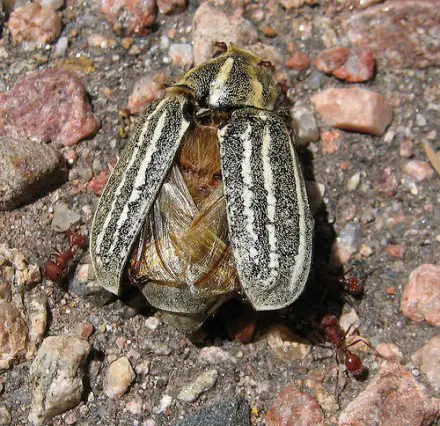An arthropod is kind of invertebrate, and this particular group of invertebrate contains numerous species. These include spiders, insects, centipedes, shrimp and crayfish. All of these creates share a common ancestor, as they all share common characteristic that define their own body builds.
For instance, they all have a segmented body. The bodies of all these creatures are divided into different segments, and each of these will attach to one another in order to allow the creature to live and to move. Arthropods like spiders can have as few as two sections to their bodies, or others like a millipede will have many.
All of these creatures have symmetry, too. If you were able to draw a line straight down the centre of one of these questions, both of the halves that you create would look exactly the same. This bilateral symmetry is nearly unique, and it means that one side of the body is exactly a mirror image of the other side - no matter what.
All of the creatures have exoskeletons, too. Unlike humans, there bones do not grow on the inside of their bodies for their support. Instead, the body has a hard shell on its outside, which is formed for chitin. This exoskeleton acts as the support that the creature needs, and performs the same function in humans in that the bones protect the vital organs from becoming damaged.
They also all have multiple limb pairs. Naturally, some of them have more than others (like millipedes and spiders), but all arthropods will have a number of pairs of limbs. Even some species of arthropods have evolved to having just a few pairs of appendages on both sides, but many of them still have huge amounts of legs on either side of their long bodies.
For instance, they all have a segmented body. The bodies of all these creatures are divided into different segments, and each of these will attach to one another in order to allow the creature to live and to move. Arthropods like spiders can have as few as two sections to their bodies, or others like a millipede will have many.
All of these creatures have symmetry, too. If you were able to draw a line straight down the centre of one of these questions, both of the halves that you create would look exactly the same. This bilateral symmetry is nearly unique, and it means that one side of the body is exactly a mirror image of the other side - no matter what.
All of the creatures have exoskeletons, too. Unlike humans, there bones do not grow on the inside of their bodies for their support. Instead, the body has a hard shell on its outside, which is formed for chitin. This exoskeleton acts as the support that the creature needs, and performs the same function in humans in that the bones protect the vital organs from becoming damaged.
They also all have multiple limb pairs. Naturally, some of them have more than others (like millipedes and spiders), but all arthropods will have a number of pairs of limbs. Even some species of arthropods have evolved to having just a few pairs of appendages on both sides, but many of them still have huge amounts of legs on either side of their long bodies.

